Magnetic field
The field around a magnet in which a magnetic needle is subjected to a torque, causing it to rotate and stay in a fixed direction.
The direction of a line drawn from the south pole to the north pole of a small magnetic needle suspended freely at any point in the field is called the direction of the magnetic field.
Magnetic Field Due to a Serial Conductor (Biot-Savart’s Law)
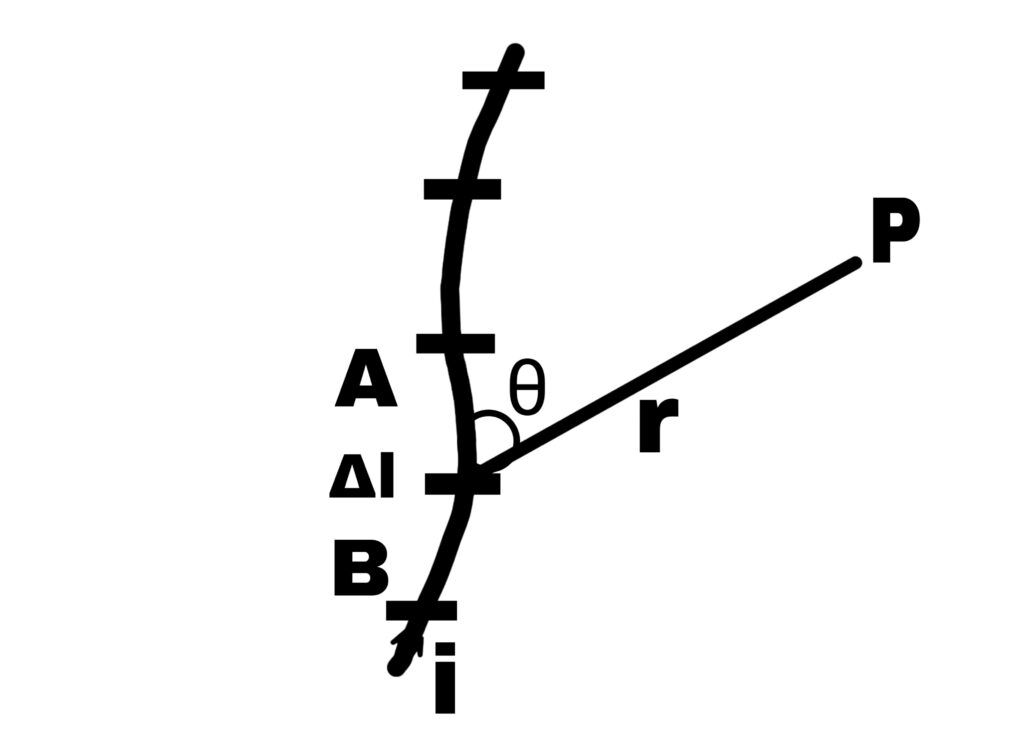
When current flows through a conducting wire, a magnetic field is generated around it, which was first calculated by Biot-Savart.
To determine the magnetic field produced by a serial conductor, Biot-Savart first divided the serial conductor into equal small parts.
Let another small part AB be of length ∆l. The magnetic field at point P is calculated using this small part.
The magnetic field AB produced by the small part ∆l depends on the following factors.
1. It is directly proportional to the electric current i flowing through the conductor.
That is, ∆B ∝ i
2. Is directly proportional to the length ∆l of that conductor element.
That is, ∆B ∝ ∆l
3. The magnetic field produced is directly proportional to the sine of the angle θ formed between the length of the element and the line joining the element to point P.
That is, ∆B ∝ Sinθ
4. Is inversely proportional to the square of the distance r from point P.
That is, ∆B ∝ 1/r²
Combining the above four rules gives,
∆B ∝ i.∆l.Sinθ/r²
∆B = (μ₀/4π)(i.∆l.Sinθ/r²)
Where,
(μ₀/4π) is a constant and its value is 10⁻⁷ N/A².
μ₀ is called the magnetization of vacuum and its value is 4π × 10⁻⁷ N/A².
Dimension of μ₀
μ₀ = [MLT⁻²]/[A²]
μ₀ = [MLT⁻²A⁻²]
Relation between vacuum magnetism μ₀ and vacuum permittivity ε₀
μ₀/4π = 10⁻⁷ N/A² —- (1)
1/4πε₀ = 9×10⁹ N.m²/c² —- (2)
Equation (1/2),
μ₀.ε₀ = 1/(9×10¹⁶)
√μ₀.ε₀ = 1/(3×10⁸)
1/√μ₀.ε₀ = 3×10⁸ m/sec
Magnetic field due to a rectilinear serial conductor of finite length
Suppose a rectilinear serial conductor CD is carrying a current i. We want to calculate the magnetic field at a point P near the conductor.
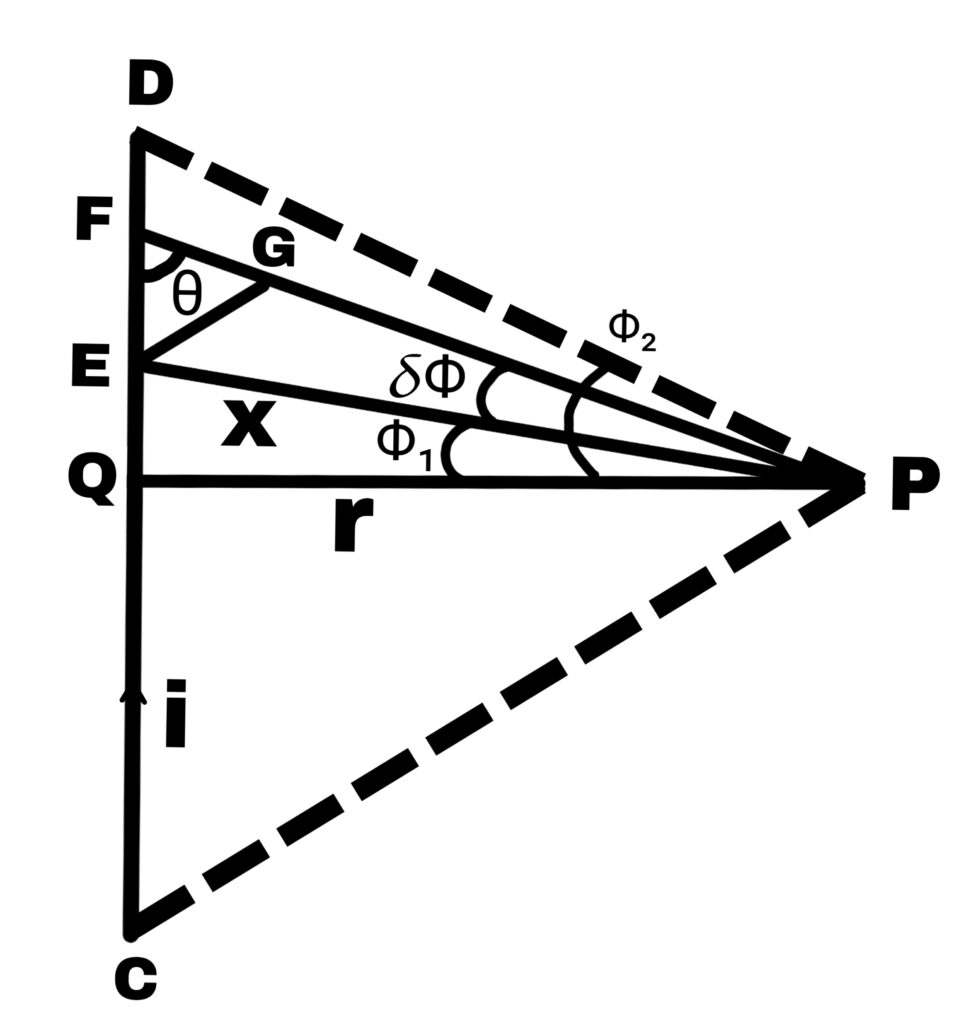
To find the magnetic field intensity at point P, divide the rectilinear conductor CD into small, equal parts.
The finite conductor has a small component EF, which has a length δl and a distance x from point P.
Therefore,
The magnetic field at point P due to this element is given by
δB = (μ₀/4π).(i.δl.Sinθ)/x²
From ∆EFG,
EG = δl.Sinθ
OR,
x.δΦ = δl.Sinθ
δB = (μ₀/4π).(i.x.δl)/x²
δB = (μ₀/4π).(i.δΦ)/x
In ∆QPE,
CosΦ = r/x
x = r/CosΦ
Since,
δB = (μ₀/4π).(i.δΦ)/(r/CosΦ)
δB = (μ₀/4π).(i.CosΦ.δΦ)/r
Or, the magnetic field at point P due to the entire conductor Magnetic field at P
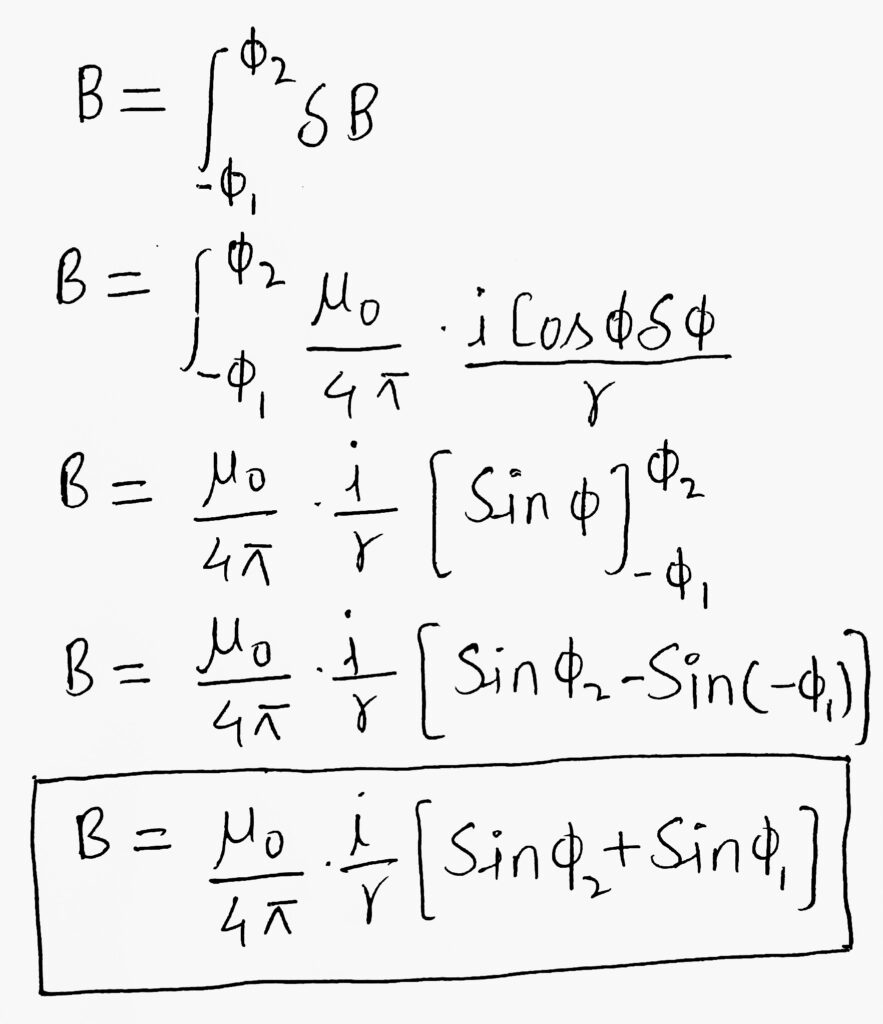
special cases
Case 1–
Φ₁ = Φ₂ = 90
B = (μ₀/4π).i/r[SinΦ₁+SinΦ₂]
B = (μ₀/4π).i/r(1+1)
B = (μ₀/2π).i/r
Case 2-
If point P is near the end of the conductor at a distance r from the conductor then Φ₁ = π/2 and Φ₂ = 0.
Therefore,
The intensity of the magnetic field in this situation
B = (μ₀/4π).i/r[Sine90+Sin0]
B = ( μ₀/4π)i/r
Ampere’s circuit Rule
Statement-
The linear integral of the magnetic field B along the boundary of a closed circuit is μ₀ times the net current i enclosed by the path.
That is,
∮→B→dl = μ₀.i
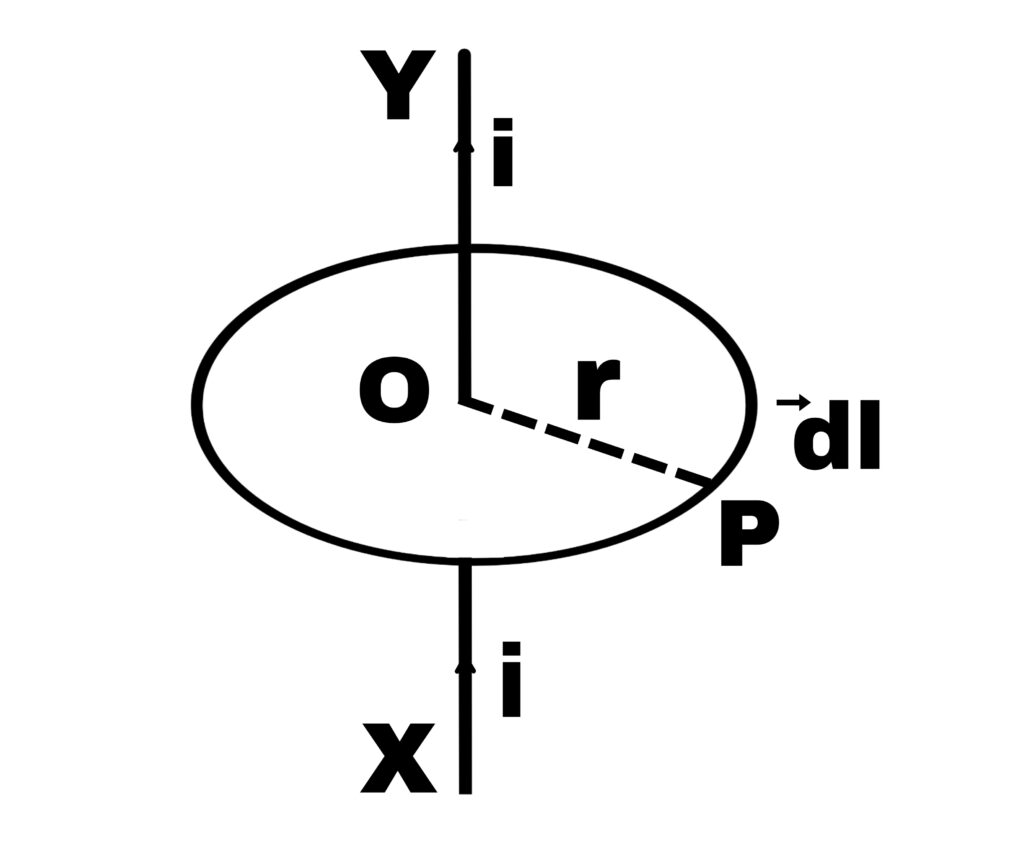
Let xy be a long wire perpendicular to the plane of the paper carrying current i.
Let xy be a circular path of radius r with center o on the wire.
Hence,
The value of the magnetic field at any point P on the circular path is
B = μ₀.i/2πr
Since,
At every point on the circular path,
⃗B and dl are in the same direction.
Therefore,
Linear integral along the magnetic path
∮→B→dl = ∮B.dl.Cos0
∮→B→dl = B∮dl
∮→B→dl = (μ₀i/2πr).2πr
∮→B→dl = μ₀i
Application of Ampere’s Law
Magnetic field due to a straight current-carrying wire of infinite length :-
Magnetic field due to a straight current-carrying wire of infinite length.
Suppose a long wire is carrying current,
i.e., a point P at a distance r from the wire, where the magnetic field intensity is to be determined. To do this, first draw a circle of radius r.
Since the magnetic field value will be the same at every point on the circular path, and B and dl are in the same direction,
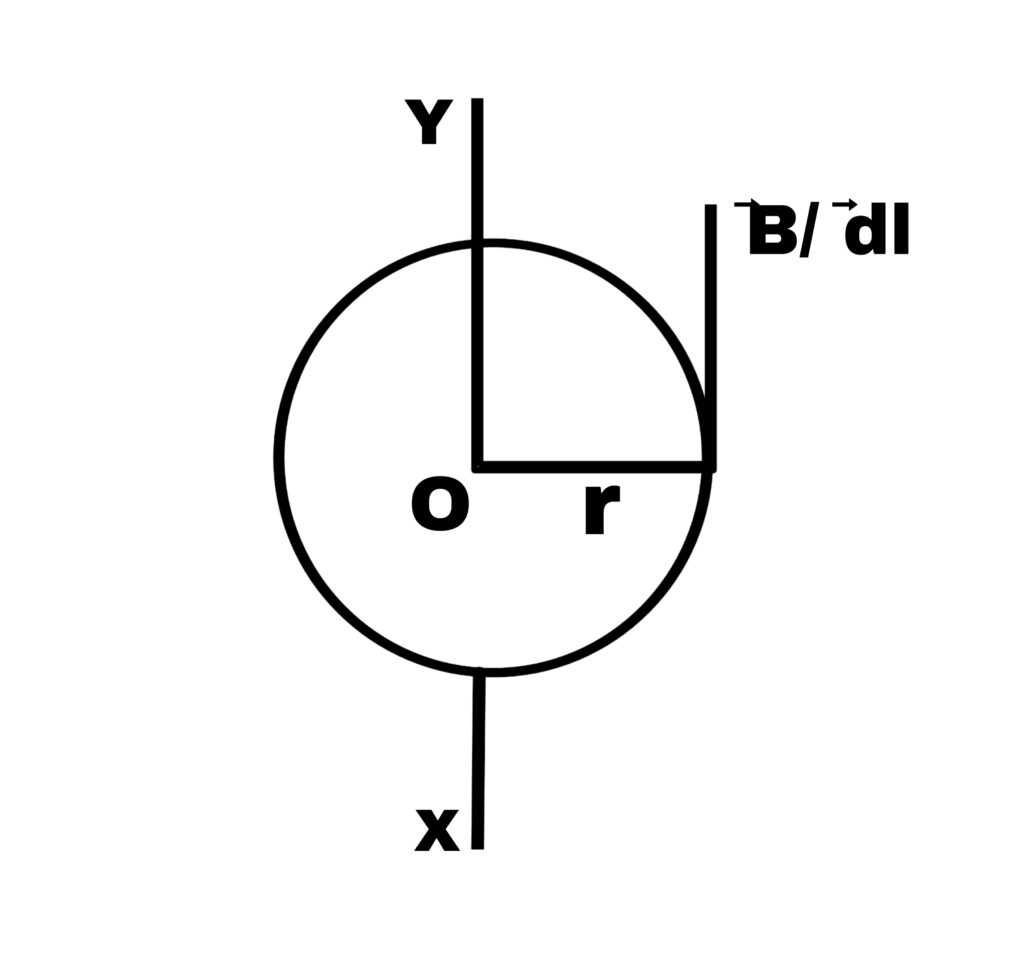
∮→B→dl = ∮B.dl.Cos0°
By Ampere’s law,
μ₀i = B.∮dl
μ₀i = B.2πr
B = (μ₀/2π).i/r

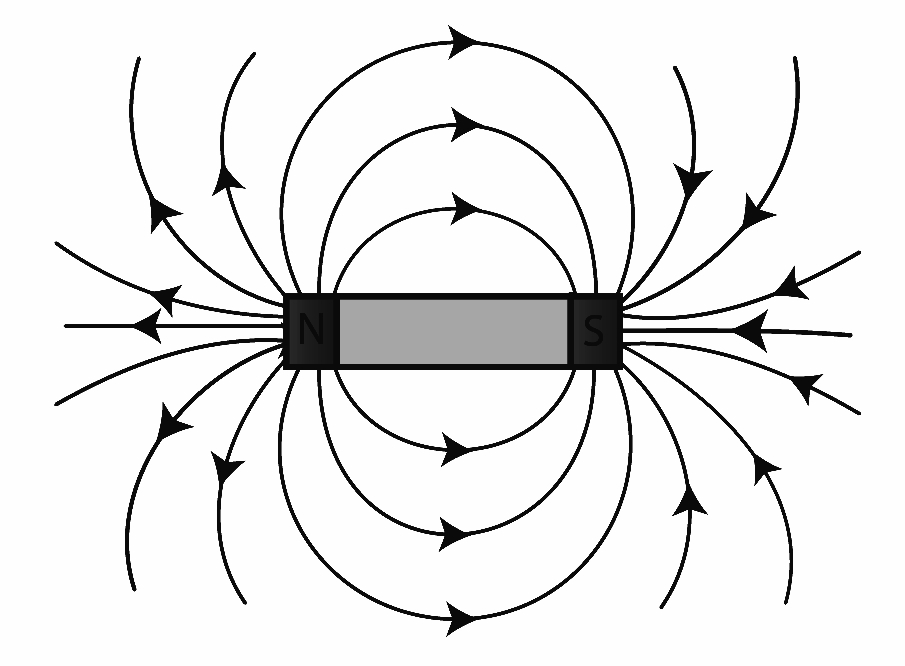
[…] lines of force notes class 12th What is magnetic field class 12th What is electrical circuits Series and parallel circuits wheatstone bridge […]
[…] and reflection of plane wave by Huygen’s theory Magnetic lines of force notes class 12th What is magnetic field class 12th What is electrical circuits Series and parallel […]